Type of resources
Topics
Keywords
Contact for the resource
Provided by
Years
Formats
Representation types
Update frequencies
Scale
-
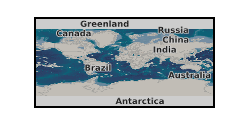
Technical report from CO2MultiStore project, component of ‘Optimising CO2 storage in geological formations: a case study offshore Scotland, September 2015. The report captures knowledge gained from the process, progress and findings of the research that is applicable to the development of any multi-user storage resource. Available for download at http://hdl.handle.net/1842/16475.
-
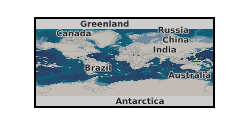
The CO2 storage operation at Sleipner in the Norwegian North Sea provides an excellent demonstration of the application of time-lapse surface seismic methods to CO2 plume monitoring under favorable conditions. Injection commenced at Sleipner in 1996 with CO2 separated from natural gas being injected into the Utsira Sand, a major saline aquifer of late Cenozoic age. CO2 injection is via a near-horizontal well at a depth of about 1012 m below sea level (bsl) some 200 m below the reservoir top, at a rate approaching 1 million tonnes (Mt) per year, with more than 11 Mt currently stored. The report can be downloaded at http://nora.nerc.ac.uk/9418/.
-
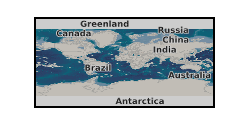
Technical report, January 2016. Development of a Scottish CO2 Hub can unlock the potential for CCS in the UK and Europe by providing early access for CO2 captured in the North Sea Region to extensive, well-characterised storage in the Central North Sea (CNS) at low risk, while creating value through CO2 utilisation. Available for download at http://hdl.handle.net/1842/15700.
-
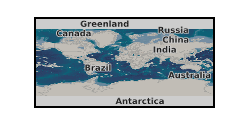
Revised full proposal cover sheet for scientific drilling (852-CPP2) 'GlaciStore: Understanding Pleistocene glaciation and basin processes and their impact on fluid migration pathways (North Sea)', submitted to Integrated Ocean Discovery Programme (IODP) April 2016. The full proposal cover sheet document is publicly available from IODP; the submitted full proposal document is restricted to the proponents for publication and for review and response from IODP. The proposal is a revision of full proposal 852-CPP in response to review by IODP. The lead submitter, on behalf to the GlaciStore consortium is Heather Stewart, British Geological Survey (BGS).The 32 proponents are from research and industry organisations in the UK, Norway, USA and Canada (BGS, Institute for Energy Technology, Lundin Norway AS, Memorial University of Newfoundland, SINTEF Energy Research, Statoil ASA, University of Bergen, University of Edinburgh, University of Oslo and University of Ottawa University of Texas at Austin). The revised full proposal cover sheet states the names of proponents of the 'GlaciStore' consortium and details for the lead submitter of the bid. The full proposal cover sheet comprises: an abstract of the submitted full proposal including description of project funding support as a Complementary Project Proposal: describes and states the scientific research objectives; summarises proposed non-standard measurements; tabulates details of the 13 proposed drill sites (revised from full proposal CPP-852) to address the scientific objectives. The objectives are to investigate: glacial history and sedimentary architecture; fluid flow and microbial processes in shallow sediments; and the stress history and geomechanical models for strata that have experienced multiple glacial and interglacial cycles. The table of revised proposed drilling sites includes designation of primary or alternate sites, the co-ordinates of the position and water depth at each proposed site, the objective for drilling and sampling and the depth to achieve the objective. The proponents, their affiliation, expertise and role for the submission are listed. UKCCSRC Grant UKCCSRC-C1-30.
-
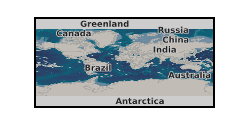
Saline Aquifer CO2 Storage Phase 2(SACS2). Work Area 1 (Geology) - Progress Report 1 April to 31 December 2000. The report can be downloaded from http://nora.nerc.ac.uk/511460/.
-
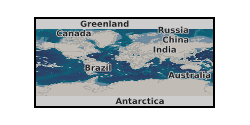
Full proposal for scientific drilling (852-CPP) 'GlaciStore: Understanding Late Cenozoic glaciation and basin processes for the development of secure large-scale offshore CO2 storage (North Sea)', submitted to Integrated Ocean Discovery Programme (IODP) April 2014. The proponent 'GlaciStore' consortium comprises research and industry organisations from the UK and Norway. The full proposal describes the relationship of the proposed research with the IODP science plan, regional background and previous work, and describes and illustrates three scientific objectives. The objectives are to investigate: glacial history and sedimentary architecture: fluid flow and microbial processes in shallow sediments; and the stress history and geomechanical models for strata that have experienced multiple glacial and interglacial cycles. The drilling and sampling strategy, standard drilling and logging operations, and the specialist measurements expected to be taken are described. Related initiatives and wider context of the proposed research also the initial and planned strategy for support from industry and government are outlined. The lead submitter, on behalf to the GlaciStore consortium is Heather Stewart, British Geological Survey (BGS).The 30 proponents from the UK and Norway (BGS, Institute for Energy Technology, Lundin Norway AS, SINTEF Energy Research, Statoil ASA, University of Bergen, University of Edinburgh and University of Oslo) and their expertise are listed. The full proposal is a pdf format file. This is restricted to the proponents for publication and to progress to a revised full proposal accepted for drilling by IODP. UKCCSRC Grant UKCCSRC-C1-30.
-
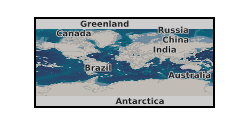
SCCS presentations, consultations, responses, briefings and communications on CCS and CO2 storage for the period 2005 - 2009
-
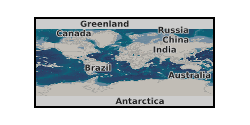
Technical report, component of ‘Progressing Scotland’s CO2 storage opportunities’ 2010. Carbon Capture, Transport and Storage is a very active field of research, especially for the past decade. From the UK perspective, a commercially crucial aspect is the saline aquifer research, since there are predicted to be vast storage capacities in the sedimentary formations of the North Sea. The report reviews the ongoing work on practical injections of CO2 as research tests for storage projects and specifically focuses on industrial sized saline aquifer injections. Available for download at http://hdl.handle.net/1842/15681.
-
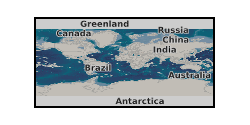
This poster on the UKCCSRC Call 2 project, The Development and Demonstration of Best Practice Guidelines for the Safe Start-up Injection of CO2 into Depleted Gas Fields, was presented at the Cardiff Biannual, 10.09.14. Grant number: UKCCSRC-C2-183.
-
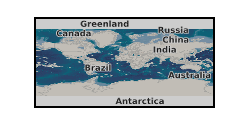
Revised full proposal for scientific drilling (852-CPP2) 'GlaciStore: Understanding Pleistocene glaciation and basin processes and their impact on fluid migration pathways (North Sea)', submitted to Integrated Ocean Discovery Programme (IODP) April 2016. The proponent 'GlaciStore' consortium comprises research and industry organisations from the UK, Norway, USA and Canada. The full proposal describes the relationship of the proposed research with the IODP science plan, sets the regional background and describes and illustrates three scientific objectives. The objectives are to: establish a high-resolution depositional and chronological framework defining multiple cycles of glacial advance and retreat over the last 2.6 Ma by investigating the strata preserved in the centre of the NSB by scientific drilling, sampling and detailed analysis; investigate how the temporal variations in depositional environment and geochemistry of the different stratigraphic units have affected the pore fluids (dissolved gases, salts and isotopes) and the microbial community; determine the measurable impact on geomechanical properties of strata (porosity, rock stiffness, in-situ stresses, pore pressure, fractures) caused by cycles of glacial loading and unloading. The drilling and sampling strategy, standard drilling and logging operations and the specialist measurements expected to be taken are described. Related initiatives and wider context of the proposed research also the initial and planned strategy for support from industry and government are outlined. The lead submitter, on behalf to the GlaciStore consortium is Heather Stewart, British Geological Survey (BGS).The 32 proponents from the UK and Norway (BGS, Institute for Energy Technology, Lundin Norway AS, Memorial University of Newfoundland, SINTEF Energy Research, Statoil ASA, University of Bergen, University of Edinburgh University of Oslo, University of Texas at Austin and University of Ottowa) and their expertise are listed and detailed. Site forms for each of the 13 proposed drilling sites are included.The full proposal is a pdf format file. This is restricted to the proponents for publication and to progress to a revised full proposal accepted for drilling by IODP. UKCCSRC Grant UKCCSRC-C1-30.
 NERC Data Catalogue Service
NERC Data Catalogue Service